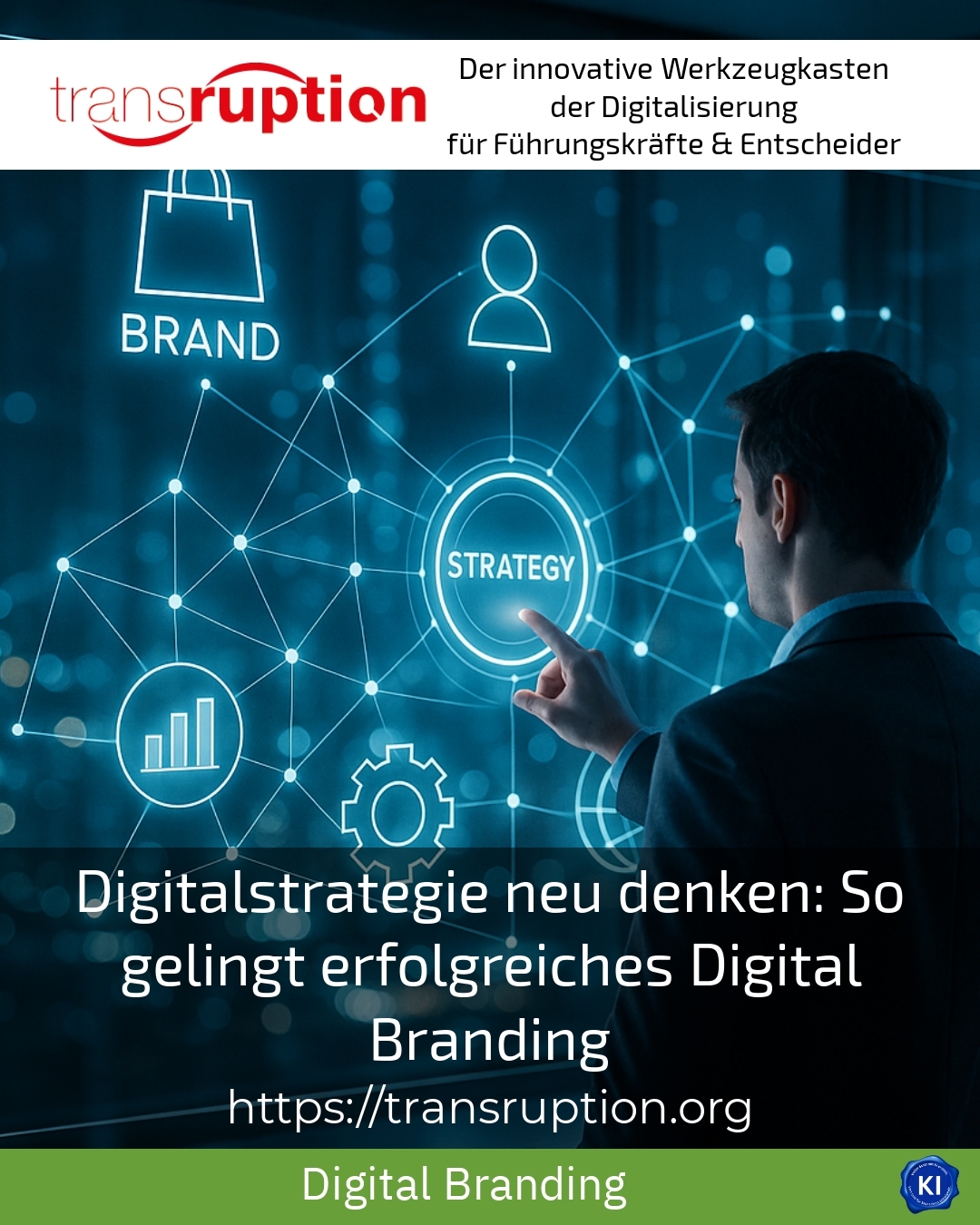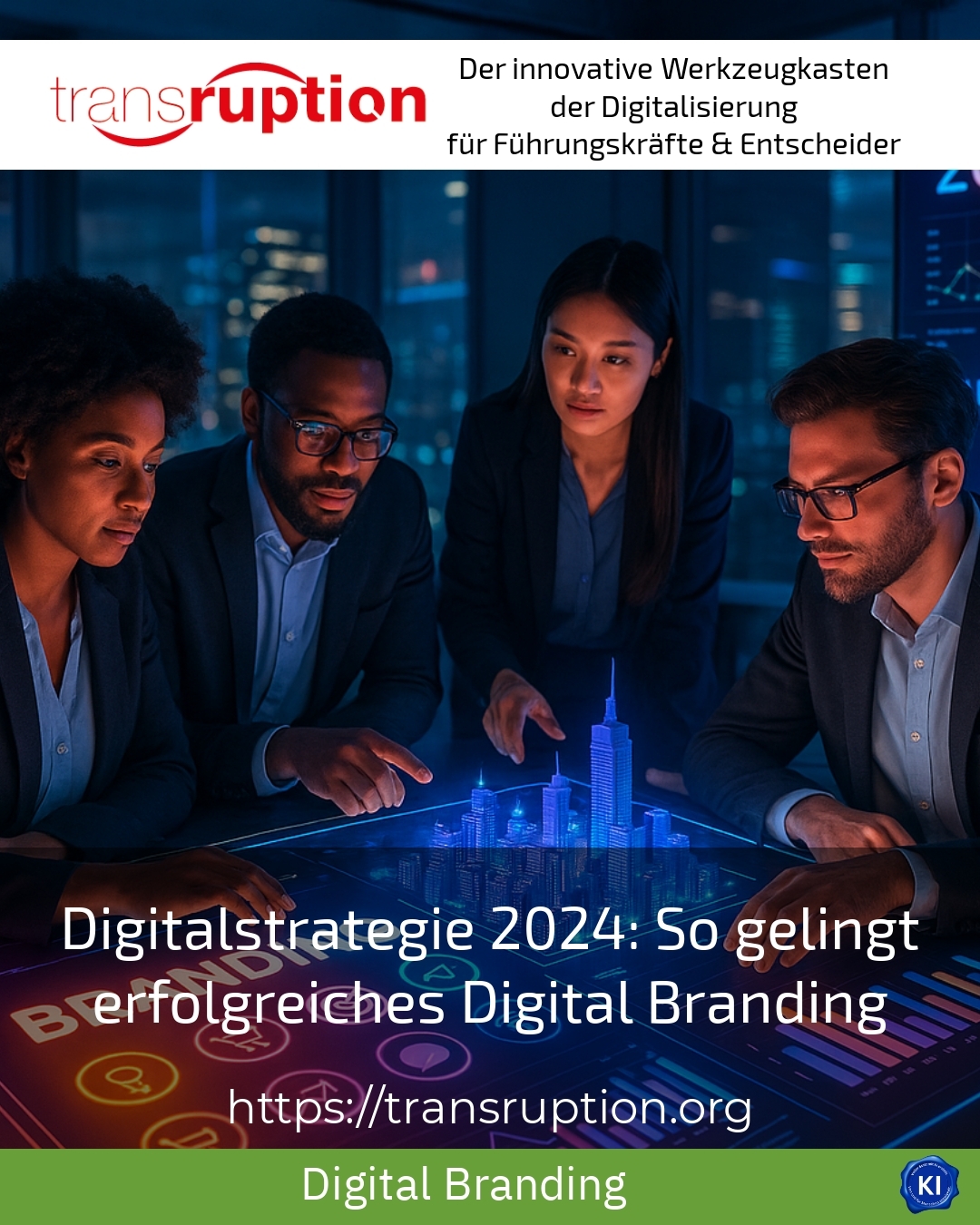In the age of digital transformation, companies have recognised how crucial a strategic digital image is in order to assert themselves on the market. Digital branding makes it possible to build a strong and memorable brand identity in the digital world and consolidate it in the long term. This is not just about aesthetics, but also about the targeted communication of values, personality and benefits for potential customers.
Why digital branding is essential today
A company's digital presence is increasingly determining how decision-makers and customers perceive a brand. In a world with countless digital channels - from social media to websites and apps - consistent brand management is a competitive advantage.
Companies often report that a well-designed digital branding recognisability is increased and the trust of the target group is promoted. For example, clear colour schemes and a consistent language style on the website and social media channels are essential to create an authentic brand presence.
It is also evident among major industry leaders: Autodesk relies on a consistent online identity in the software industry that communicates technical innovation and user-friendliness. In the fashion industry, About You succeeds in creating a modern and approachable brand presence through personalised offers and influencer collaborations. Construction companies such as Strabag use their online presence to convey sustainability and technical expertise as core values.
Core building blocks for successful digital branding
The design of an effective digital branding is based on several elements that harmonise with each other:
- A clearly defined brand identity: values, mission and unique selling points must be precisely formulated.
- Consistent corporate design: logo, colour palette, typography and imagery appear uniform across all digital channels.
- Authentic brand communication: The tone of voice and content on websites, social media and digital campaigns should be convincing and appropriate for the target group.
In practice, this means, for example, that an agency in the IT services sector not only presents technical features, but also emphasises its innovative strength and customer focus by posting lively case studies online. A fashion supplier can use Instagram and YouTube to provide authentic insights into the manufacturing process and thus create transparency. A medium-sized craft business, on the other hand, can build trust through bundled digital customer reviews and a user-friendly website.
BEST PRACTICE at the customer (name hidden due to NDA contract)
BEST PRACTICE at the customer (name hidden due to NDA contract) showed how a website relaunch combined with a continuous social media content strategy measurably increased brand awareness within a year. The concise visualisation of the core messages and a clear stance on sustainability had a positive effect on customer acquisition among decision-makers.
Clever use of digital channels: Success through meaningful networking
The market offers numerous platforms that appeal to different target groups. Decision-makers in the B2B sector particularly appreciate LinkedIn, where specialist articles and case studies have an impact. In the B2C sector, companies can use Instagram and Facebook to create powerful visual experiences that arouse emotions and encourage participation.
One example from the technology sector is WeTransfer: the provider has established itself as a creative brand in the file transfer sector with a minimalist website featuring appealing artist images. The result is a digital brand world that goes far beyond pure functionality.
T-Mobile also shows how bold colours and a youthful tone in communication campaigns can appeal to new customer groups and set itself apart from competitors with a classic image.
In addition, many companies rely on personalised customer journeys to increase brand loyalty through relevant content and a targeted approach. Construction companies, for example, use targeted newsletters that emphasise both technical innovations and sustainability initiatives to convince decision-makers.
BEST PRACTICE at the customer (name hidden due to NDA contract)
BEST PRACTICE at the customer (name hidden due to NDA contract) has achieved a measurable increase in customer interaction with an integrated social media campaign combined with targeted email marketing. This supported acquisition in middle management in particular by emphasising innovative solutions and team culture.
Tips for successful implementation and support
It is important for decision-makers to address the challenges of digital brand development at an early stage. In addition to the content strategy, technical implementation also plays a role. It is worth bringing in expertise to support both digital brand management and the target group-specific approach.
Support from experienced coaches or agencies can help to realistically formulate goals and develop practicable solutions. Clients often report how such collaborations have provided impetus and reduced uncertainty - be it in the development of a standardised brand identity or in the selection of suitable communication channels.
The following practical recommendations for action have emerged:
- Start with a clear analysis: Where does the brand currently stand digitally? Which channels are used and what does the target group look like?
- Development of a digital brand story that serves as a guideline for all measures.
- Maintain consistency: Design and tonality must be synchronised across all touchpoints.
- Monitoring and customisation: Enable feedback loops and flexible responses to user needs.
BEST PRACTICE at the customer (name hidden due to NDA contract)
BEST PRACTICE at the customer (name hidden due to NDA contract) used an iterative development process in which existing content was successively optimised. In the process, transruptions coaching supported internal communication between marketing and sales in order to position the brand more strongly digitally and organise work processes more efficiently.
My analysis
A well thought-out strategy for digital branding is essential for companies that want to be recognised in the digital world in the long term. The combination of a clear brand identity, consistent visual and communicative design and the targeted use of digital channels creates sustainable competitive advantages. Decision-makers benefit in particular from professional support, as the responsibilities are diverse and it is important to maintain a common thread in the complex digital environment.
Further links from the text above:
Agentur Ledermann - Digital Branding Glossary
Yeeply - Examples of digital branding in technology companies
W3 Digital Brands - Digital branding agency
247Grad - Employer branding examples from the SME sector
OMR Glossary - Digital Branding
For more information and if you have any questions, please contact Contact us or read more blog posts on the topic TRANSRUPTION here.


























